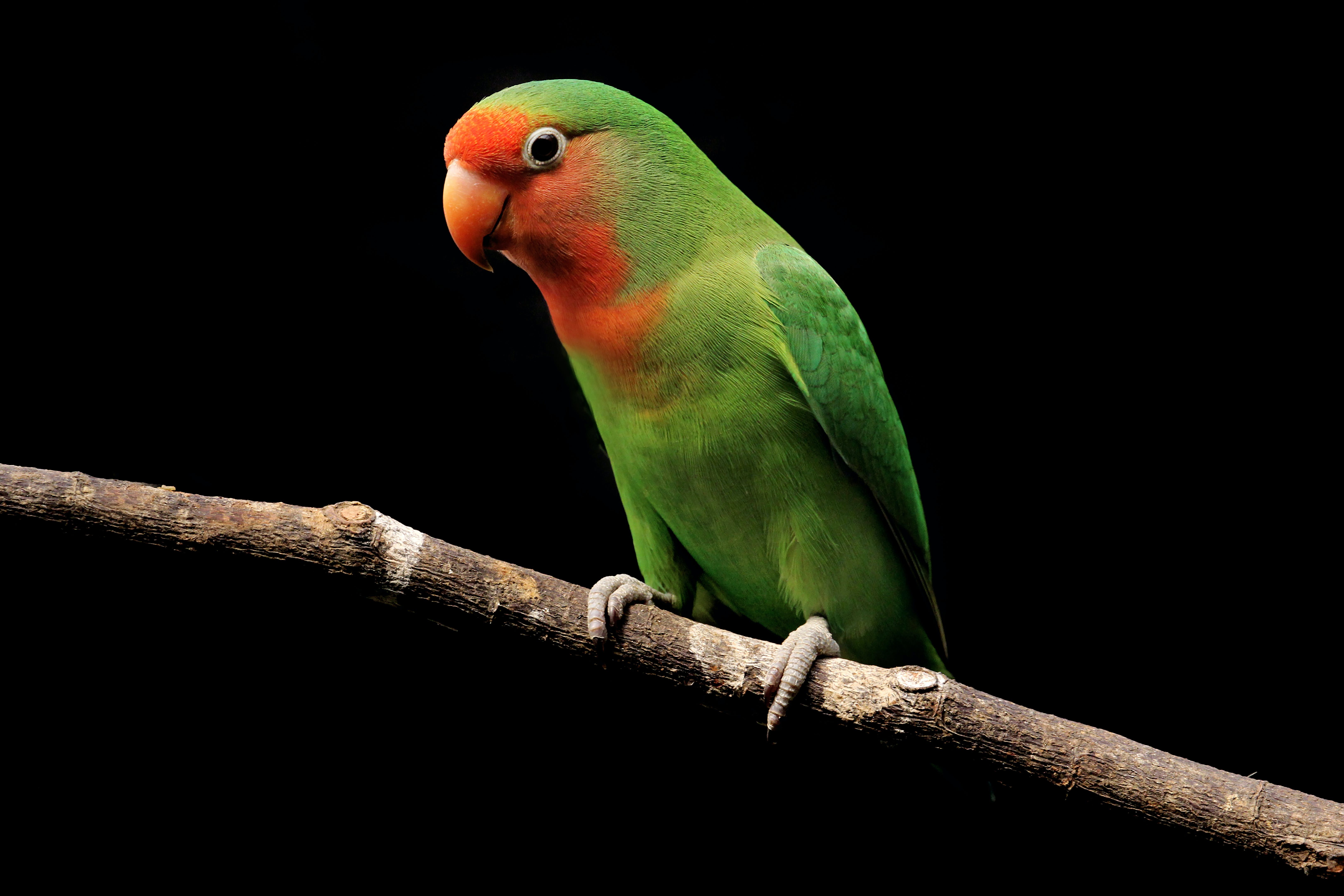Swinging parrots
By Maja Mielke

Rosy-faced lovebird. Image by Jeffry Surianto from Pexels.
Researchers have described ‘beakiation’, a new climbing mode in parrots, for the first time. Like a pendulum, the birds are hanging from their beaks, swinging their feed forward to climb along horizontal branches. This adds a new skill to the fascinating repertoire of beak-assisted climbing modes in parrots.
Climbing while using the beak as a third limb is a common behavior among parrots. They mostly use this ’tripedal locomotion’ while climbing along steep or vertical substrates (such as tree trunks). A research group from the New York Institute of Technology has been studying such climbing behavior in rosy-faced lovebirds, a parrot species native to south-west Africa. Previously, they have shown that these birds use their beak as a propulsive forelimb to pull themselves up (Young et al., 2023). During that behavior, the upper beak is lifted almost 40 degrees, much more than is common in other birds.
The use of the beak while climbing along horizontal branches, however, has not been described so far. ‘Beakiation’ is a pendulum-like climbing mode that involves the bird hanging below the branch and swinging the feed forward while supporting its body weight with the beak. The word refers to the famous ‘brachiation’ used by gibbons, who swing their bodies like a pendulum from branch to branch using their exceptional long arms.

This is how a ‘beakiating’ parrot looks like. Image modified from Dickinson et al. (2024). Click here for a video!
The researchers have now described and analyzed this unique behavior for the first time (Dickinson et al., 2024). To do so, they 3D printed an artificial branch of 2.5 mm diameter and recorded the birds with high-speed cameras while they ‘beakiated’ along the horizontal bar. With force plates, they measured the forces acting on the beak while the birds swung forward.
Analysis of the videos revealed that the birds climb with an average speed of 10 cm/s. The beak has to support up to 150% of the birds body weight during the swing phase, when the beak acts as the pivot point of the bird pendulum. However, the pendular effectiveness (the per cent recovery of the initial energy) is only about 25%. For comparison: gibbons reach a pendular effectiveness of 80%! It is lower in lovebirds, because they move much more slowly and carefully.
Birds as climbers
But why do birds climb in the first place? After all, they have wings to fly! Climbing is surprisingly common, even among flying birds. Via climbing, birds cover short distances in complex tree structures that would not allow them to fly. Climbing gives them access to food resources that would otherwise not be available. Also, climbing over a short distance can be more cost-efficient than flying, which consumes a lot of energy for takeoff. Given that, complex habitats sometimes require innovative gaits or climbing modes.
Several non-parrot birds rely only on their feet for climbing (e.g., woodpeckers, nutchatches, and treecreepers). Parrots, however, make use of their curved beaks for climbing, as you can see in plenty of adorable YoutTube videos of pet parrots. One of the most impressive examples of climbing parrots in the wild is the kākāpō. The flightless bird living in New Zealand is the heaviest of all parrots, weighing 1.5-2 kg. It is a ground-dwelling bird but climbs high into trees to reach its favorite food, the seeds of the remu tree. And, you guessed it, the kākāpō also uses its beak for climbing through trees. Whether it is also ‘beakiating’, is not known, though. Indeed, although ‘beakiation’ is being used by pet parrots to explore their owners flats, it has not been documented for any parrot in the wild. However, as Dickinson and colleagues write in their new study:
“[…] we consider it entirely plausible—perhaps likely—that this behaviour may be used in specific contexts in the wild […].”
The beak as a multi-functional tool
This study once again highlights how incredibly flexible the functionality of a bird’s beak is. It shows that it is much more than just a tool for feeding, but rather serves as a third limb to assist the birds in navigating through complex habitats. Who knows how many more innovative and unexpected climbing modes are out there that we haven’t discovered yet?
Thanks for reading! If you have any questions or comments or just want so say hi, I will be happy to hear from you. Feel free to email me!